- Home
- William Golding
An Egyptian Journal Page 22
An Egyptian Journal Read online
Page 22
‘It will be too much for me. When the doctor goes, I shall go.’
‘Where?’
He shrugged. The doctor took up the conversation.
‘It’s beaten me. The country I mean, I came full of enthusiasm. To help. A Third World country – It would be so simple! Nature, you see? It’s a kind of stagnation.’
‘And the Institute?’
‘Are you familiar with the desert?’
‘No.’
‘There are relics everywhere. Dry. Weathered. Sand-blasted. Malesh. Mafish. Afwaen.’
‘I…’
‘You see it’s how you get to feel.’
‘Well…’
It seemed silly to wish anyone good luck or pay compliments to the obvious dedication that had set up and maintained this plant factory in the desert. In the end we did a lot of shrugging at each other and came away.
‘Motoring up the Nile by water, driving up the bloody Nile by road, driving out into the desert to have a look round, seeing a temple or two, being whimsical, making a book full of pretty pictures with a load of irrelevant writing…’
‘There, there. Calm down. What did you expect? And you know, the Nubians just might get their road.’
‘And their olive trees, I don’t think!’
‘I’, said Ann in a positive way, ‘shall let this whole business of the olive trees get an airing.’
‘You?’
‘I. Me.’
‘This,’ said Alaa, ‘I long to hear.’
The Fayoum is bigger than it looks on the map [see plate]. It is the size of an average English county. You do actually go down into it from the desert; you approach first a grey-green line which broadens, unfolds, becomes a brighter green and then you are quite suddenly in a land that seems even more fertile than the Nile Valley. Our ancient friend the Bahr Yusuf ends here and the Birket Qarun is a sizeable lake lying up against some low hills to the northwest. I had wanted to identify yet another site where papyri had been found, El Hammam on the south shore of the lake, so we drove slowly along to the west, skirting the water. There were rowing boats drawn up in rows or moored just offshore and these were brilliantly painted like the rowing boats of Upper Egypt rather than the Delta or Middle Egypt. They made a pretty picture in the sun, but no one seemed to be using them. Perhaps the fishing had to wait for new water to be led down the canal and into the lake. The land did not seem to have more than a general relationship to the map. We looked for a bay where there was only a straight line of shore. Where there had been, according to the map, something of a headland with El Hammam on it, there was a group of buildings set back against a straight line of shore. The truth dawned on us. The lake has shrunk year by year, land has been reclaimed and El Hammam, once on the shore of the lake was now well inland. Not that it mattered as far as I was concerned after all. I was as capable of talking about Fayoum papyri after a non-visit as before it. That is to say, I should, like everybody else at some point, discourse on the extraordinary insight into daily life, the vivid immediacy of the words that emerged from sand and soil, the contracts, love letters, business, lust, love, household minutiae, ignorance and learning, law, war, childhood….
Theon to Theon his Father greeting. That was a fine trick you played, not taking me to Alexandria! If you refuse to take me along with you to Alexandria I won’t write you a letter or speak to you or wish you health. Mummy said to Archelaus ‘The boy gets on my nerves – take him away!’ So send for me, please, please! If you don’t send I won’t eat, won’t drink. So there! I pray for your health.
You can quote from them endlessly, letter to a man in debt, letter of expostulation, invitation to a party, to a festival, to a funeral, deed of divorce, marriage contract…. There is a letter of consolation, pre-Christian and bleak:
Irene to Taonnophris greetings. I was as much grieved and wept over the dead as ever I did over Didymus. I did everything that was fitting and so did all who were with me. But truly there is nothing anyone can do in the face of such things. So do you comfort one another. Farewell.
Pre-Christian? Modern, perhaps. Post-Christian?
Come to think of it that one was actually from Oxyrhynchus, but what of it? You need a Sir Thomas Browne to deal mellowly with these very partial resurrections, and seeing that the Institute for the Multiplication of Mango and Olive Trees is laying down a correspondence every bit as human and vital and illuminating one need not make too much of the fact that the ancients suffered as much as we. The day-to-day material from the rubbish baskets of ancient Egypt seems to speak most clearly the trite observation that all men must die. To contemplate the spectrum of literacy that emerges from the sands of Egypt – from a census return, through a play by Euripides to a lyric by Sappho – is to discover in oneself a new respect for literature and a new evaluation of its purpose as life-proclaiming and life-enhancing.
North of El Hammam at the limit of the reclaimed land was a pile of buildings that looked like a fort with a lighthouse on top. We found some of our old acquaintances the river police here, silted up as it were at this ‘lonely outpost’. They were even raggeder than their fellows of the main stream, on duty at the furthest end of the Bahr Yusuf, where pirates were to seek and one supposed that no one ever came. Even their rifles were silted up and should have been in a museum. I swear they dated from the nineteenth century and had not been cleaned for some years, probably for fear that they would fall to pieces. If fired, I judged they would be dangerous fore and aft. So we turned away, left them guarding nothing in particular and drove into the richly fertile countryside. But before we got there we crossed an intermediate area, either just dried out or officially reclaimed, and this area was so thick with salt it was glitteringly white. Salt is the bane of Egypt and rises from deep down. There is a method, if your engineers are good enough, of so draining the land that salt is flushed out of it. Indeed, during the best years of Egyptian irrigation all the Nile water that flowed into the Mediterranean was salt-flushed into low ditches mile by mile and drained away so that the fields had nothing given them but sweet water while the sea, which could cope with it, took the salt. For the salt is rising everywhere since the high dam was built and the whole land not so amply flushed. It is eating, to take an example, at the lower stones of the Temple of Luxor and making a bad joke of reclamation. The archeologists of Chicago House are working against time to keep a record of the temple before the salt eats it.
All the same, the Fayoum seems to be a favoured area of Egypt, bar some small stretches such as we had seen by the shore of Birket Qarun. It does not seem to have the profound and muddy squalor of life just inland from the Mediterranean nor the confined and overspecific life of the narrower valley. It is ample, spreads. Ann was the first to notice that uniquely (for Egypt) in the Fayoum the inhabitants have space to give to flowers. There is a degree of dignity in the housing which speaks of lives long established in relative comfort rather than lived hand-to-mouth for generation after generation. There is substance in the buildings. We visited some famous springs round which a ‘pleasaunce’ has been organized – I can think of no other word since it is not a park. You pay for admission and though prettily enough arranged it is very small. The day we were there the place was crowded with students. The girls seized on our Minder and demanded to be photographed with him for reasons which may have been sufficient to them but which escaped me. The standard of health and dress seemed to be higher here than anywhere else in Egypt. There were many villas. It was in some sense bougainvillaea country with all the marker implies. They say that bilharziasis has been eradicated from the Fayoum which implies even more for the province than bougainvillaea. The whole area is densely populated but so bursting with greenery the people are hidden by it.
We came to the city of El Fayoum itself, which was once sacred to the crocodile god Sobek so the Greeks called it Crocodilopolis. It was here, I seem to remember, that other tourist – a bit of a VIP – fed cakes to crocodiles. He was a Roman senator and we have the letter
ordering preparations to be made for his reception. He was coming through to see the sights so guest chambers must be got ready, he must be met with gifts – a custom that has endured – and provided with scraps to feed to the sacred crocodiles. Perhaps after all he wasn’t a tourist but a prospective ruler.
El Fayoum is a busy city with road, water and rail connections to the main valley of Egypt. It seemed to me to be less heaped with débris than Cairo and less dreary than Asyut. Tourists don’t go there since Sobek has gone. In El Fayoum itself a more interesting sight and sound is the multiple waterwheel [see plate]. A tiny park has been constructed round this at the centre of the city. It consists of four undershot waterwheels placed side by side and linked. They deal with some of the water which enters the province by way of Joseph’s Canal. Since the city lies in the centre of the great depression, or more accurately on a small rise or tell at the centre of it, the wheel lies just below street level. There is much noisy traffic in the complex of streets round the wheel, which is a pity since the most curious thing about the machine is the sound it makes. It – or should I say ‘they?’ – they, then, revolve slowly. Silver skeins of water drop down through their elaborate mechanism and it may be that these chime on themselves or the metal of the structure, but they are not heard. The wheels, however, exhibit what can only be called the capacity for just being able to move, as one might suppose Heracles only just managed to hold the sky up for a bit. As they do so they make a complication of sound as if each wheel bears its individual part. It is a groaning, whining, creaking, whistling, screeching discord which would be horrible if that were all. But it is not. The noise seems always on the very verge of concord or even melody as if, given just one tiny further impetus, one last heave, it would manage against all the odds of the universe to sing. The sound, close up to your ear, yet distant, contradicting your experience because distancing itself, gives you the impression that this is not something happening here, close by, but out there where there are stars and things and this is a suggestion of their music. Meanwhile the silver skeins waver and drop and the parping traffic drowns out just that last resolution into concord so that you never hear it. This, oddly enough, seems the richness of water dripping and splattering as the great wheels groan and gasp and do I cannot tell what – produce electricity or grind corn or perhaps do nothing but just succeed in getting their own unoiled weight to revolve like the cloudless heavens. But we drove away and left it, still groaning and wailing; which I suppose it is doing as you read this.
We drove on south towards the narrow entrance/exit of the depression. We passed the guarding pyramids of Hawara and El Lahun and the desert came in on both sides. We crossed Joseph’s Canal, that great work which became complex with all kinds of weir and barrage and bridge just where it entered the province, and I at least said goodbye to it with some regret, supposing I should not see it again. I am convinced it is in fact Joseph’s Canal, a great work worthy of a pharaoh and worthy of one with the good sense to make Joseph his vizier. Going up and down Egypt you come more and more to a feeling for the logic of that canal, feeding the vast reservoir of the Fayoum as it did in days when men had hardly got over the cultural shock of Writing.
So, having traversed the Fayoum from north to south we turned north again along the main stream of the Nile. On this road you have the Nile on your right and the desert on your left; and for between twenty and thirty miles the edge of the desert exhibits a series of pyramids. For us it was a strange contrast; the days we had taken in the boat, pushing south against the current, lucky to make four or five miles an hour over the ground, and now, doing the same stretch at fifty miles an hour.
Our next designed stop was to be the pyramid of El Meidum [see plate]. It had been an object I had wanted to see from close by because you could say it is the only pyramid to have suffered a disaster and quite possibly been improved by it. According to received opinion, most of the pyramid collapsed in one go. The result is that it is no longer pyramid-shaped but resembles the pedestal for a statue. Of course, it would not be possible to construct a colossus to the same scale, at least one free-standing. I suppose the Sphinx might well crouch up there out of cannon shot and so stare from a bearded and unblemished face clean across the Nile to the Eastern Desert? But unstatued, the thing is more impressive for my money than any other pyramid. Perhaps it speaks to me because I am a child of my generation and century and we no longer hope for the whole truth. It is the informing movement, the brave attempt, the suggestion, the remnant that moves us. So the pyramid of El Meidum, huge even by the scale of Giza yet heaped round by its own ruins, is more to our taste and a surer invitation to our curiosity.
We turned off on a side road, then, when the vast shape invited. We drove twisting along a banked-up road until we reached the desert. There seemed to be a track over the sand so we took it. We passed holes that had held prehistoric ‘crouched’ burials. There were modern Islamic or Christian tombs; and after that a great area of flat sand and black flakes of shale about half a mile from the pyramid. It was clear that something unusual was up. On the southwest corner of the monument the débris from the early collapse had been peeled down, newly revealing many courses of crudely shaped limestone. Forty or fifty Egyptians – fellaheen with a Reis controlling them – were scraping away and hurrying the sand down to reveal yet more which no one had seen for the last few thousand years. Evidently massive archeology was come to Meidum. However, the human figures gave us a scale and, of course, inevitably, we found that the figures looked like ants. You can’t say anything else.
But how beautiful the building is! The layers that fell away have revealed what I suppose must be called the core of the pyramid. But this core has sides more nearly vertical than is commonly thought to be a pyramid angle. That work is clean and clearcut as a crystal. Indeed, you feel as you look that the layers that fell were some kind of husk or integument or wrapping which at a given and surely significant signal had collapsed all together. How the dust must have gone storming up! How the falling rock must have thundered! For sure, a god would keep that apparent catastrophe for a great occasion! Staring across at it and fiddling incompetently with my camera I thought that it seemed like a moment of myth made visible. Moses should have stretched out his staff towards it; or when a god was so intolerant and cruel as to slay every firstborn throughout Egypt, the layers should have fallen in disgust and despair. Then, when the thunder had rolled away towards Sinai and the dust had sifted down, the last trickle of fragments ceased among the fallen stone, the crystal had stood there, perfect and not a shape anyone had expected, like a newly discovered and eternal fact.
As far as I know, the pyramid of Meidum – built it is now decided for Pharaoh Huni – is the only pyramid to have done anything other than weather slowly. After all, objects of that size and shape have little enough capacity for spontaneous action. There is a certain even tenor, an uneventful sameness about the long existence of a pyramid that makes Meidum and its evident catastrophe even more remarkable. Apart from that, the whole structure, rose-red brick core, off-white limestone on a foundation of desert colour against a pale blue sky is eminently satisfying. Man made the phenomenon. But nature, gravity, temperature change, rain, time and desuetude took over. The result is subtler in simple beauty than anything that ever came from a brush. At last I had seen in Egypt an ancient monument which not merely met my expectations and anticipations but surpassed them.
So having looked too little and photographed too much in the modern manner we climbed back into Alaa’s car and drove towards the pyramid across the sand and black shale. Before we got close we were intercepted by a ‘guardian’ and a tourist policeman, who angrily forbade us to take the photographs that were now in our cameras. They explained that any photograph of the pyramid was forbidden – any photograph!
It was odd. We supposed the archeologists had declared that pictures of their discoveries were forbidden and the ignorant tourist police had interpreted this prohibition more widely th
an had been intended. For the pyramid is visible for ten miles in every direction, the dig itself for two or three miles and there is no way in which you can be prevented from photographing that object, impressive even when it is on the horizon. So we came away, defiantly photographing and descended to the valley again. Then we drove towards Cairo, the various pyramids revealing themselves to us in the car and on the highroad as they had not done when we were at low water level in the boat. There is one pyramid which may show a reaction to Meidum’s sudden outburst (I don’t want to be a pyramid – I want to be a pedestal!). This is the ‘bent’ pyramid, in which the angle changes on the way up so that the whole shape is rhomboidal. One theory is that this pyramid, built for the successor to Huni, was under construction when the pyramid of Meidum shed its covering. It may have been taken as a hint and the angle of the bent pyramid changed as a result, to make the thing more stable. What a row of monuments they are – even the ruined and destroyed ones! They hung over the ancient city of Memphis – named from them – like palaces of the next world. They must have entered popular tradition in a thousand ways now lost to us. Nor, it seems, were they the ruinous burdens that it might appear. They may have been a form of relief work during the flood season when people had little to do but sit the time out, twiddling their thumbs. Certainly the greatest of them all, the pyramid of Cheops is anonymous in the sense that there is no inscription giving it to him [see plate]. In fact his name only occurs on a block of stone tucked away in the body of the building and it seems to have been a workman’s scrawl. Truly, the various pyramids must remain a source of controversy and conjecture, not just because there is a lack of hard evidence about them but because we cannot put ourselves back into the states of mind of those people so distant in time from us, either ruling or ruled.
So we came back to Cairo and its modern traffic, Alaa exhausted by driving and we exhausted by a very full day’s seeing. The business of getting anything down in my journal seemed next to impossible. The traffic of Cairo seemed more dangerous than before and its noise more exacerbating to the nerves. I began to worry over trivial things, like the possibility of having trouble getting visas extended.

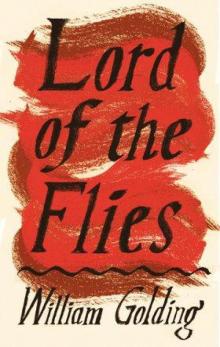 Lord of the Flies
Lord of the Flies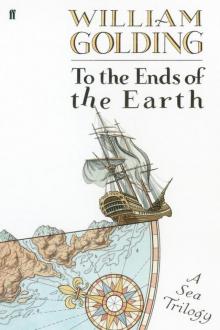 To the Ends of the Earth
To the Ends of the Earth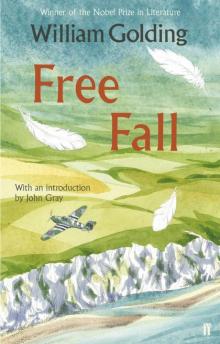 Free Fall
Free Fall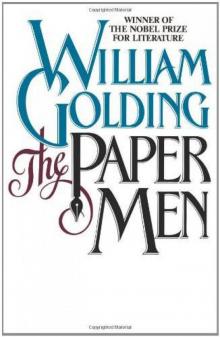 The Paper Men
The Paper Men The Spire
The Spire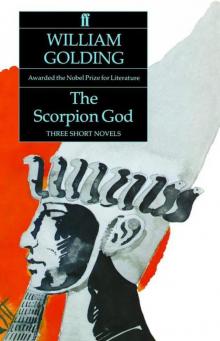 The Scorpion God: Three Short Novels
The Scorpion God: Three Short Novels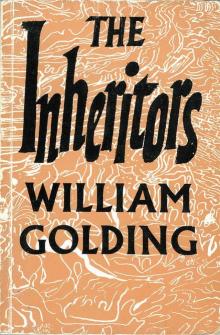 The Inheritors
The Inheritors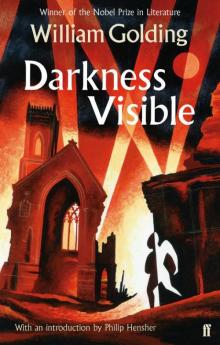 Darkness Visible: With an Introduction by Philip Hensher
Darkness Visible: With an Introduction by Philip Hensher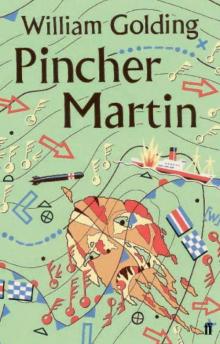 Pincher Martin
Pincher Martin The Pyramid
The Pyramid The Double Tongue
The Double Tongue An Egyptian Journal
An Egyptian Journal Rites of Passage
Rites of Passage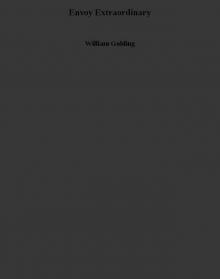 Envoy Extraordinary
Envoy Extraordinary